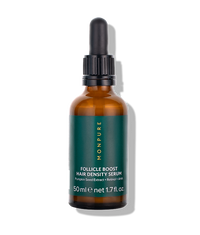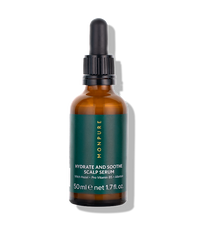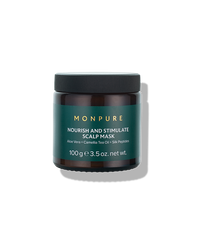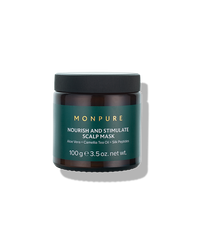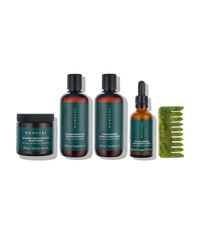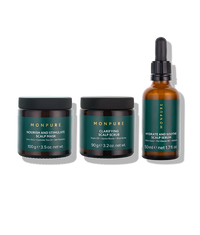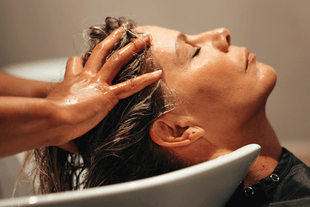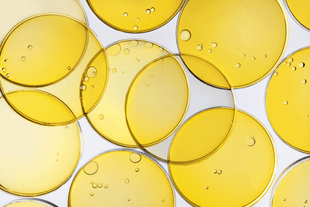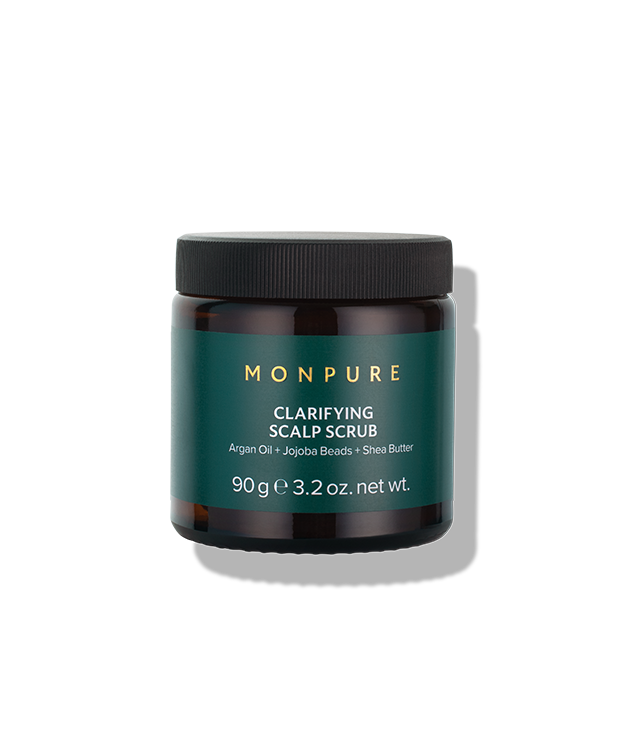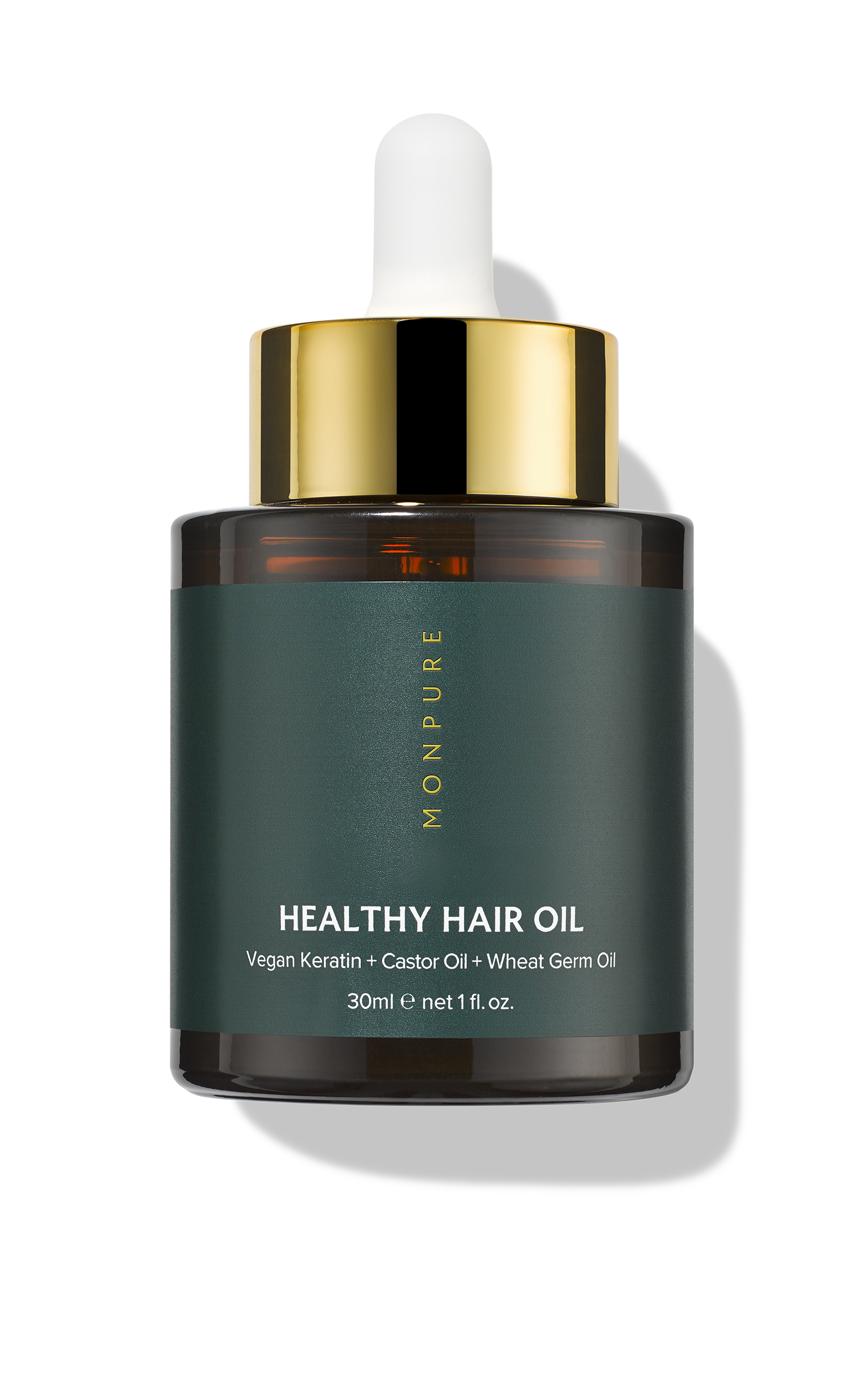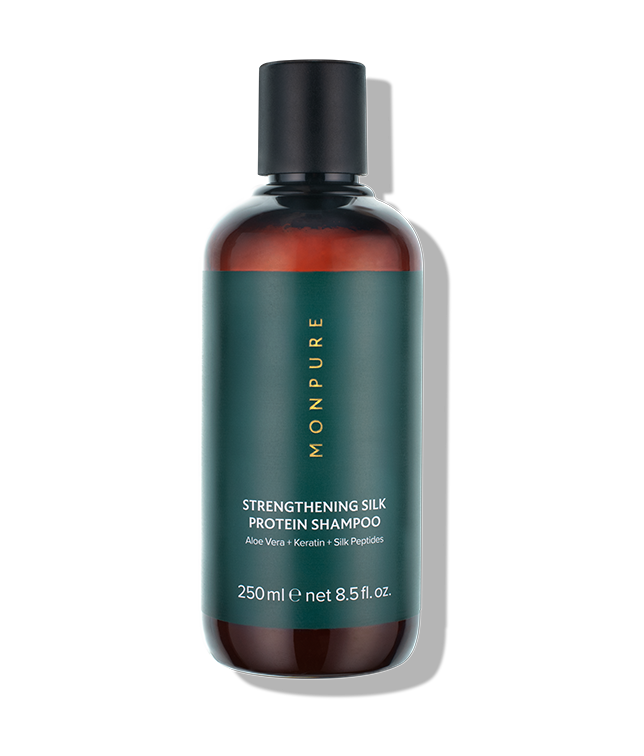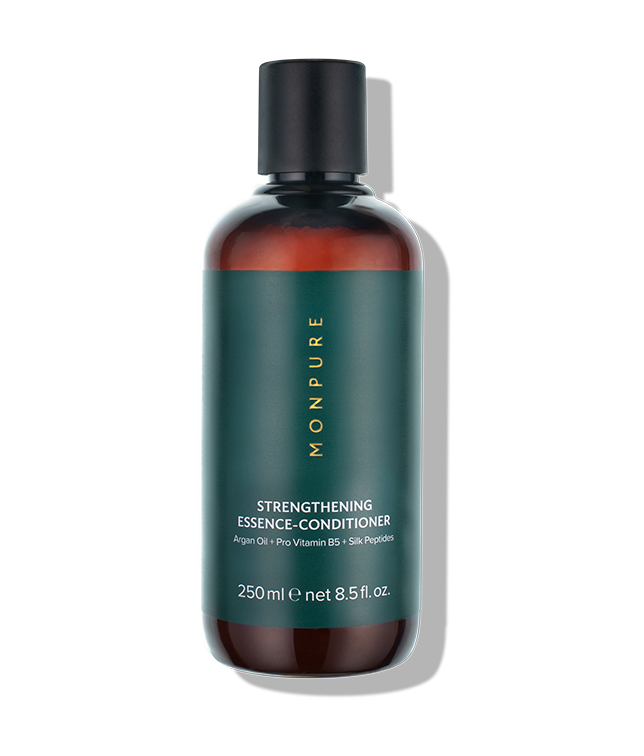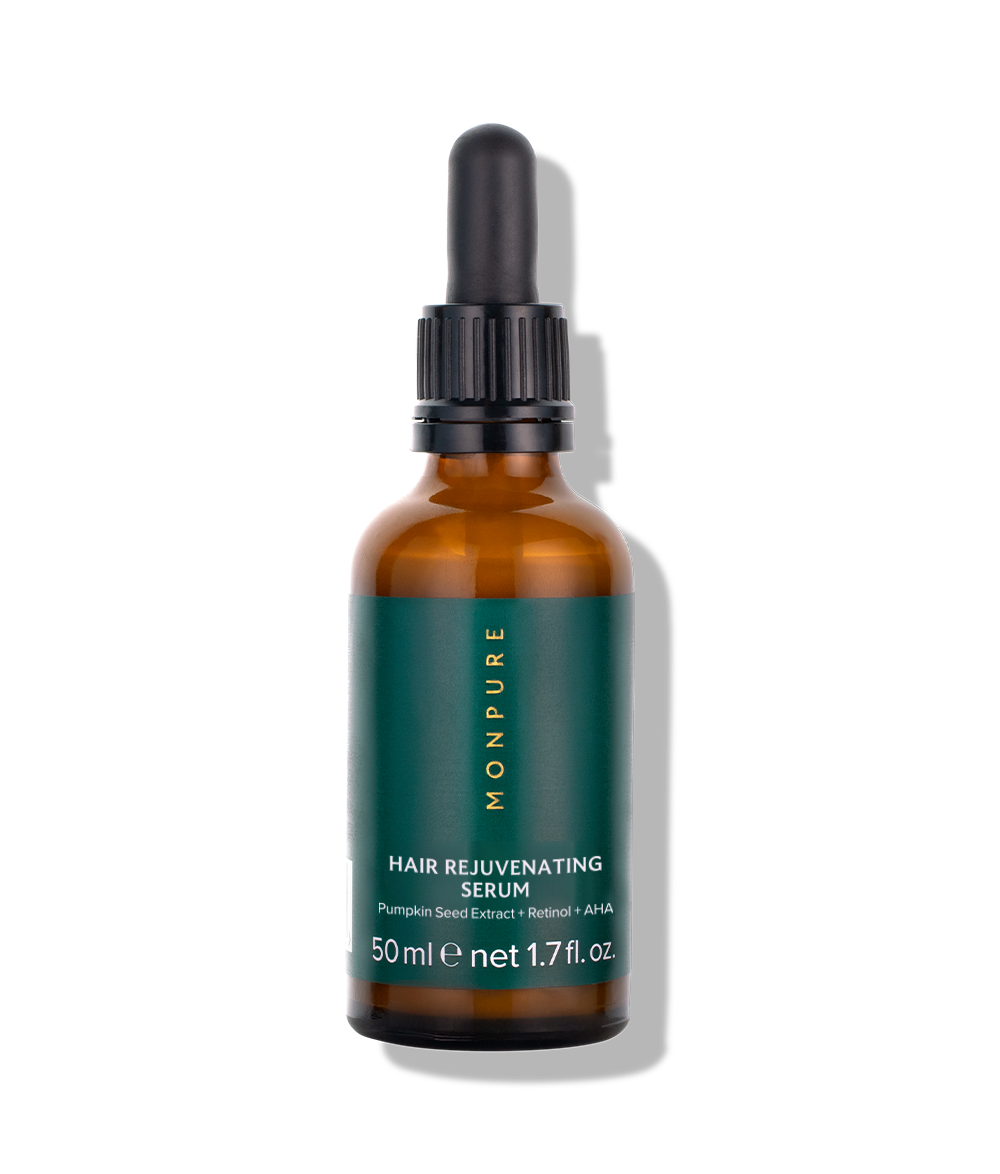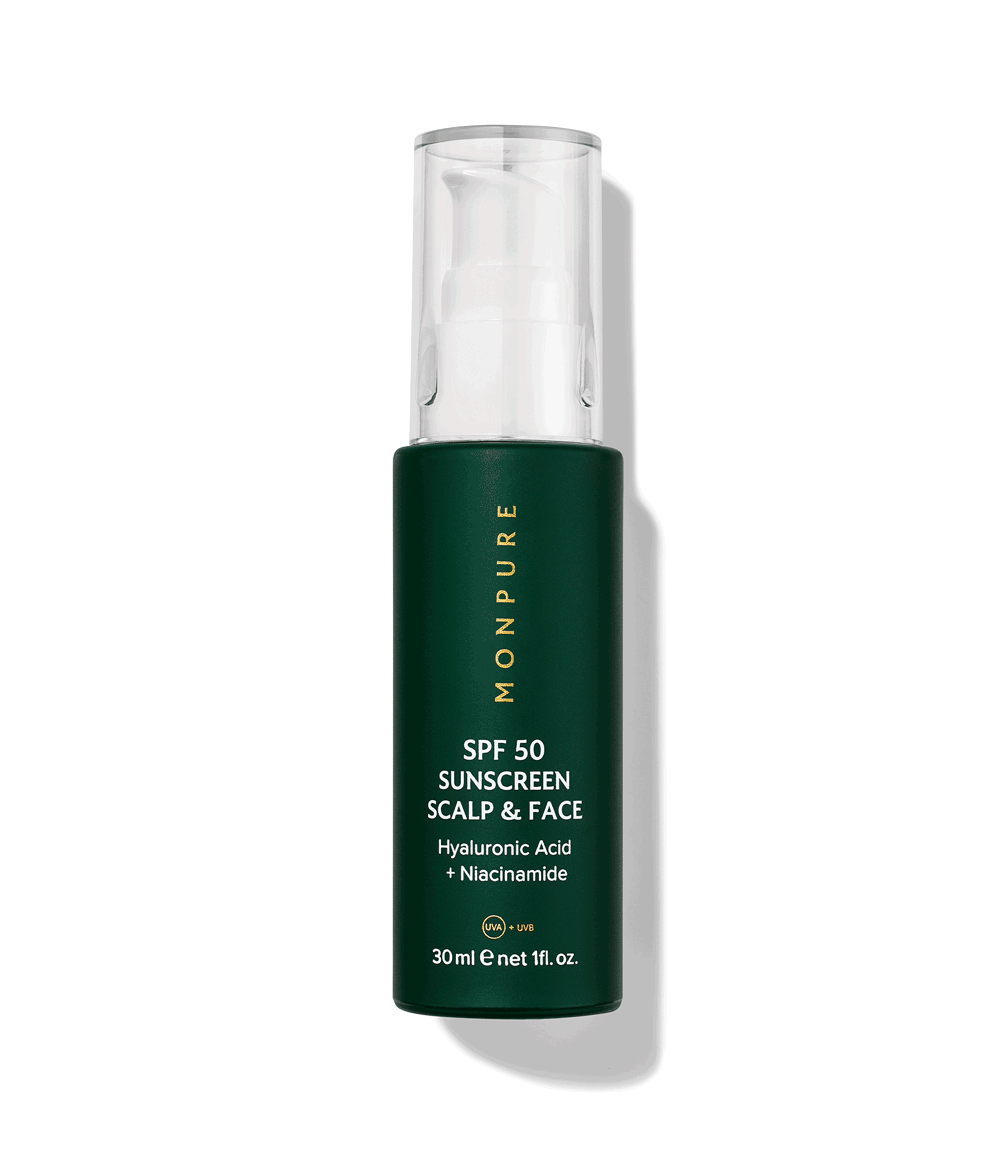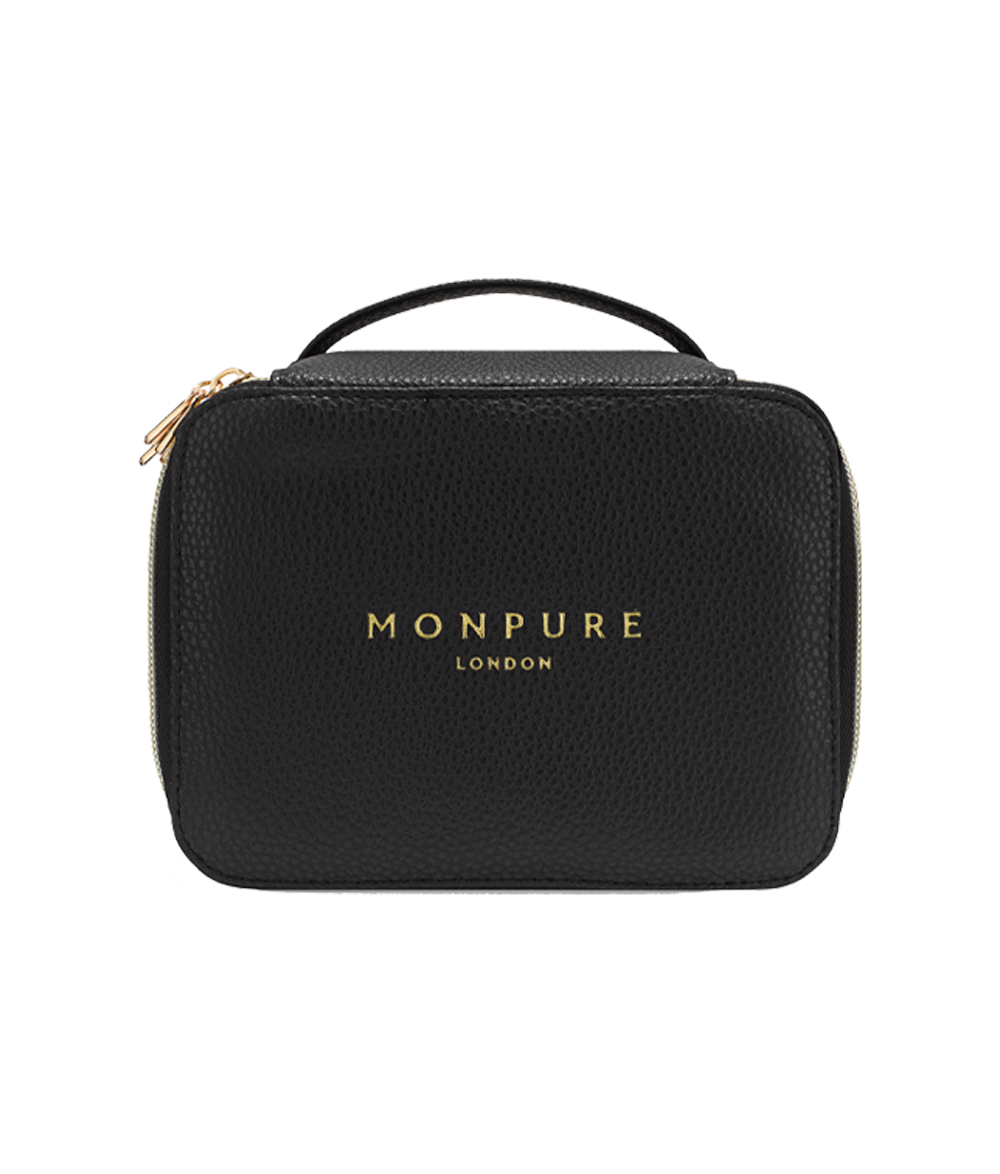Most of us will experience some degree of fine hair and thinning as we age or undergo menopause, while some of us are born with it. However, the treatment of fine and thin hair has been somewhat misleading over the years in the haircare space.
The established mantra in haircare is to ‘avoid the top of your head at all costs’ if you have fine and thinning hair, especially when it comes to conditioner. But, we are here to debunk that so-called rule, unpack the science of fine and thin hair, as well as teach you how to effectively treat hair that is gradually losing its density and thickness over time.
Hair thickness and density
Many people confuse hair thickness (fine hair) and hair density (thin hair), and even using the terms interchangeably. However, 'fine' refers to the actual diameter of your individual hair strands, while 'thin' refers to the amount of hair strands on your head.
As you age, your hair reduces in both thickness and density. Let’s unpack what’s happening biologically with hair thinning.
The process of hair thinning
The most common causes of hair thinning are male and female-pattern-baldness, otherwise known as ‘androgenic alopecia', the latter of which is often a symptom of menopause. Androgenic alopecia is a gradual condition that is caused by the increased presence of the hormone, DHT (1). DHT is a byproduct of testosterone and its conversion is helped along by an enzyme called 5-alpha-reductase. So what happens when this hormonal imbalance occurs?
-
The hair follicle shrinks (follicular miniaturization), producing a shorter, thinner hair shaft.
-
The growth (anagen) phase shortens.
-
The time between the shedding (telogen) and new growth (anagen) phase lengthens (2).
Follicular miniaturization
During follicular miniaturization, hair follicles that were once producing healthy hairs start to generate thinner hairs with more fragile shafts (3). So what is the outcome of hair thinning?
-
Shedding increases
-
The start of new growth is delayed
-
The result is both finer and thinner hair (4).
Over time, especially in the case of menopausal hair loss, hair becomes more brittle, fragile and thin. As well as more sparse in density. In women undergoing androgenic alopecia, gradual thinning usually begins at the part line and sides, followed by increasing diffuse hair loss radiating down from the top of the head (5).
Read more about the difference between hair loss and thinning here.

How Fine Hair Is Different
1. Surface Area
Fine hair is smaller in diameter than average sized hair, therefore the protective outer ‘cuticle’ layer of the hair covers a less dense middle. This results in an increased surface area relative to its mass. As a consequence, products with large molecules such as oils and conditioners can coat these hair strands and weigh them down because the hair mass itself isn’t as robust as average sized hair (6).
2. Deformation
Being lighter than average, fine hair can collapse under weight and is more prone to deformation. This means that it is more susceptible to the effects of gravity and outside forces resulting in it becoming more easily malleable. This sensitivity to force means that when fine hair is loaded with products, it tends to hang flatter, with less body and volume than coarser hair types (6).
Debunking Fine Hair Myths
Historically, the management of fine and thinning hair has been misguided but we are here to shift that thought process.
Fine and thinning hair requires a routine revamp
As your hair thins and becomes finer over time, it is important to change your shampoo and conditioner to those with lightweight consistencies and clean, fortifying ingredients, particularly targeting the scalp, follicles and hair shaft simultaneously.
Many formulas on the market are filled with harmful, waxy ingredients that weigh down roots with their large molecules and heavy residues.
The fallacy of only conditioning the ends
The fallacy that conditioner is purely designated to treat the ends of the hair only further facilitates the ongoing cycle of dehydrating the scalp. This can lead to:
-
An overproduction of sebum that contributes to weighed-down, oily, weak and malnourished hair.
People with fine hair need to deliver moisture, nutrients and care to their scalps to ensure that they don’t fall into this trap.
The cycle of starving the scalp: how do we break it?
Many women with fine and thinning hair use harsh shampoos, packed with sulphates, silicones and parabens, that strip the scalp of its natural oils and moisture, and As it has been drummed into us to only condition the ends, the scalp’s moisture is never replenished. The result?
-
A neglected scalp equates to a never-ending cycle of dehydration and starving the scalp of essential nutrients - which is the foundation of healthy hair.
Fine hair doesn’t have to mean flat hair
The solution is to opt for clean, lightweight and skincare-inspired formulas, and to nourish the scalp just like you would your skin. A key philosophy at MONPURE is about giving the scalp the same care and attention as the skin on our face, and that includes bestowing it with moisture and nourishment.
We understand that many women worry about their fine, flat and thinning locks being weighed down and appearing greasy and lifeless when they apply products to the scalp. However, MONPURE’s formulations totally revolutionise this assumption. Our scalp-centric range is ultra-lightweight, strengthening and nourishing. It prioritises the often-neglected, yet most important part of the whole ecosystem - the scalp. Without the fear of a greasy or weighed-down aftermath.
MONPURE’s Guide to Caring for Fine and Thinning Hair
Don’t shy away from conditioning the scalp
MONPURE’s Strengthening Essence-Conditioner, inspired by K-beauty regimes, resembles a skincare essence with its lightweight texture. It is meant to be enjoyed by both the scalp and lengths, as it delivers optimum moisture without any worry of greasy consequences.
Our conditioner, coupled with the Strengthening Silk Protein Shampoo, fortified with vegan silk peptides, is scientifically proven to repair, protect and rebuild frail and damaged strands, which is often an unfortunate reality for those experiencing hair thinning or finer hair with age.
Go beyond shampoo
Just like with skincare, exfoliation is an essential step in maintaining a healthy and balanced scalp. For those with fine and thinning hair, it's essential to go beyond shampoo and introduce a gentle exfoliator to ensure a thorough cleanse.
MONPURE’s Clarifying Scalp Scrub works to gently buff and slough away the impurities, product-buildup and debris that clog our follicles, weigh down our locks and impede healthy hair growth. While a scrub is essential in ridding the scalp of the nasties that give a greasy and flat appearance, it also primes the scalp for the optimal absorption of other active ingredients that are effective for fine and thinning hair.
Give your hair a boost from within
The best-selling Follicle Boost Hair Density Serum is the hair growth boosting hero that started it all. It’s a go-to for anyone dealing with fine and thinning hair, working to boost fine locks to their optimum potential, and combating hair thinning at the source. This serum is certainly a key component of any thin and fine-haired regime.
Its hero ingredient, pumpkin seed extract, blocks the 5-alpha reductase enzyme responsible for converting testosterone to DHT - the androgen hormone which is the main culprit for thinning hair. Skincare acids retinol and lactic acid work together to exfoliate the scalp for improved absorption of other hair boosting and nourishing ingredients, as well as decongesting follicles to ensure bouncier and healthier hair.
Discover the wonders of fine hair solutions in the Great Lengths Regime.

At MONPURE, we want to re-educate women with fine and thinning hair about the significance of treating the scalp with love and care, just like you would your skin. Our lightweight and high-performance range, potent in plant actives, is transforming the treatment of fine and thin hair within the haircare space.
Have any questions about fine or thinning hair? Reach out to experts@monpure.com.
References
(1 & 2) https://www.medicalnewstoday.com/articles/68082
(3) https://healthfully.com/miniaturization-of-hair-follicles-5212526.html
(4) https://pubmed.ncbi.nlm.nih.gov/17034520/
(5) https://www.ccjm.org/content/88/3/173
(6) http://science-yhairblog.blogspot.com/2012/03/how-fine-hair-is-different.html

